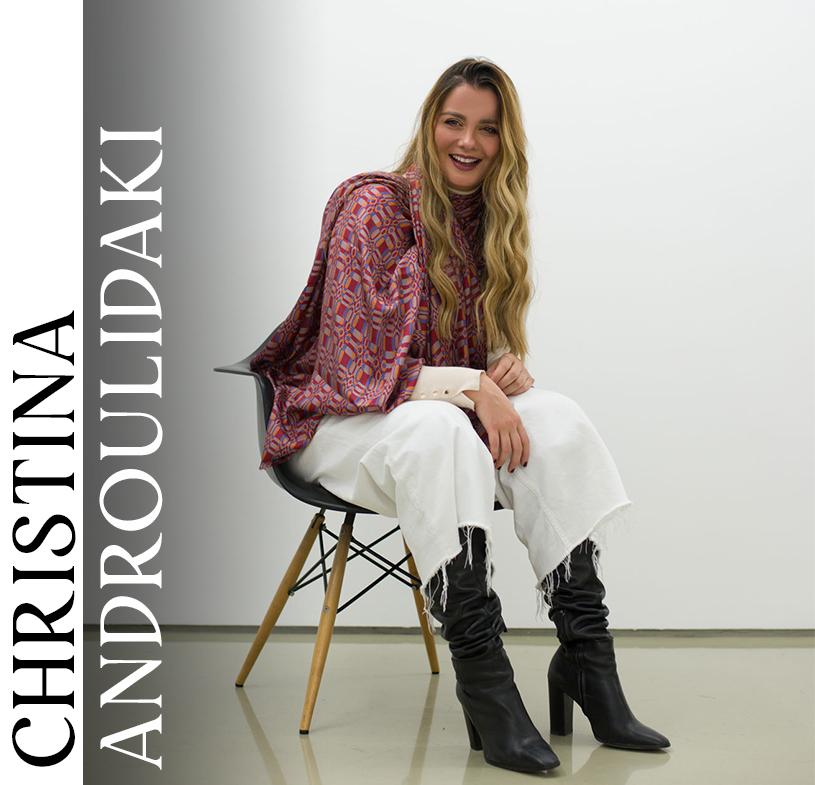CHRISTINA ANDROULIDAKI
Gallerist, Curator & Founder of CAN Christina Androulidaki Gallery
Greek artists have something significant to say, and huge talent to go with it. My gallery was born to showcase and promote emerging artists that I truly believe in.
Based in the heart of Kolonaki, Athens, Christina Androulidaki presents and promotes contemporary art, with a focus on emerging Greek talent.
Why open a gallery during an economic crisis?
Times of crisis are often a very fruitful period for creatives. When I decided to establish my own gallery back in 2012, there were of course some people that tried to discourage me but my heart told me to go ahead. I wanted to support local art. Greek artists have something significant to say, and huge talent to go with it. What we lack however is a market to support them. My gallery was born to showcase and promote emerging artists that I truly believe in.
Why is artist support lacking?
The Greek system has not believed in local artists until recently. Although we’ve seen newer galleries make a change, there is still room for improvement. I believe that an art collector should trust his choices and instincts. This is the essence of patronage: support the ideas and art you truly believe in and nurture the artists until they become a success.
How do you choose the artwork you exhibit?
I showcase art that I find interesting and new, not because I think it will sell. There is an element of luck in these matters that cannot be controlled and that is where your instinct takes the lead. Instinct and experience of course. If you want to learn to collect art just start visiting shows. Don’t underestimate how much knowledge you can acquire simply from seeing loads of art.
What is the first piece of art you bought?
A small drawing by Iris Touliatou for my home. I will never forget the day I bought it. It was like a bug. Since then, I can’t look at art without wondering its price. Once you start on this path it becomes a lifetime passion.
And one of your first discoveries at can?
A solo exhibition by visual artist Manolis D. Lemos. He was still studying at the Athens School of Fine Arts when I spotted him. I was really drawn to his work. We have presented three solo shows of Manolis since 2013.
Do you host retrospective exhibitions?
You have to look at the past in order to shape your future. Retrospective exhibitions are really important in the artworld and, yes, we regularly organize retrospective shows of artists that have passed but we consider their work very important or influential for later generations. So far, we have presented a homage to Celia Daskopoulou, Dimitris Condos and Nikos Alexiou.
Could you describe the importance of such exhibitions?
A great example is Celia Daskopoulou. For over 30 years, Daskopoulou painted almost exclusively portraits of women from a very distinctive viewpoint. A post-feminist view. She was interested in criticizing, through painting, the social role of women in society and depicting the female psyche. I encountered her work for the first time at a friend’s house. She had been completely forgotten since her death in the early 2000s and there was a need for a re-appreciation of her work. A student of artist Yiannis Moralis, she was one of the first Greek women to study abroad. She truly carved her own path. It is hugely important for young artists to look back at their predecessors when setting out to create their own future, and I want to ensure we promote this.
Interview by Daphne Karnezis, Athens-based journalist
Photo by Ria Mort
